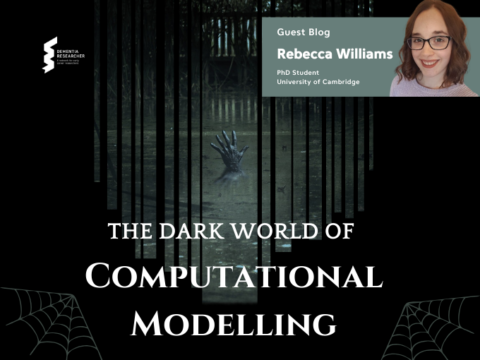This week, I’ve been immersed in the Alzheimer’s Association International Conference, and in this blog I’m going to attempt to share a few highlights from the week. That in itself is no easy task, with 1,000 presenters covering every possible area of research…. but I will try.
In considering how to approach this, in a way that won’t either bore the life out of you, or clumsily fail to explain the science I don’t understand – I’ll focus on what AAIC have highlighted as the main sessions, select a handful of my own favourites, and share my thoughts on the overall feel of the event and the format.
Before I start… I want to ensure you know that even though the conference is over, it isn’t too late to sign-up. ISTAART members can access all the sessions and posers online for 30 days, so please take a look for yourself, and share your own highlights in the comments box.
Lets start with Monday, and the news around air pollution and its effects on cognitive outcomes. This isn’t the first time we’ve heard that there is a connection between these two things, but this is the first time the evidence has been brought together to prove that reducing pollution, especially fine particulates in the air and pollutants from the burning of fuel, is associated with lower risk of all-cause dementia and Alzheimer’s disease. Reducing air pollution was already listed as one of the 12 modifiable risk factors highlighted in the Professor Livingstone 2020 Lancet report – but this isn’t old news… it adds to the body of evidence and may result more trials and funding for this area of discovery (and hopefully add to the things that encourage policy makers to save the planet).
Moving on.

Another reason for reducing air pollution (like the saving the planet wasn’t enough)
The next big news from the week came from three studies by Emma Nichols, Stevie Hendriks and Dr Ambar Kulshreshtha and if you watched the presentation you’ll know that it was a real rollercoaster of goods news and bad news. Positive trends in global education access are expected to decrease dementia prevalence worldwide by 6.2 million cases by the year 2050. BUT, anticipated trends in smoking, high body mass index and high blood sugar are predicted to increase prevalence by nearly the same number: 6.8 million cases. With these forecasts incorporated, researchers with the Institute for Health Metrics and Evaluation at the University of Washington School of Medicine reported that they estimate the number of people with dementia will nearly triple to more than 152 million by 2050. The highest increase in prevalence is projected to be in eastern sub-Saharan Africa, North Africa and the Middle East. Dementia prevalence data is being updated all the time, I’ve seen presentations in the last 18 months that suggest that the incidence rate is actually reducing, but prevalence is increasing, with the stats being affected by improved diagnosis rates, and people living longer with the disease – but either way, this isn’t good news, and it adds to the pressure to find effective treatments, and clearly improve care.
Next we come to Wednesday, when we heard that transgender and gender nonbinary adults in the U.S. are more likely to report worsening memory and thinking, functional limitations and depression compared to cisgender (non-transgender) adults, according to two new studies by reported at Dr Ethan Cicero, from Emory University and Dr Nickolas Lambrou from University of Wisconsin. They reported that little is known about Alzheimer’s disease, dementia and cognitive impairment among transgender adults. However, it is known that transgender adults experience a greater number of health disparities considered risk factors for dementia — including higher cardiovascular disease, depression, diabetes, tobacco/alcohol use and obesity — and the social inequities experienced by transgender adults are also linked to an increased risk of cognitive impairment. I think there will be more research on this topic… so watch this space.
Now,
Every year, you notice a theme emerging… it’s the hot topic on social media, and the issue that’s getting talks about the most, this year (if we ignore the strong presence of Biogen and Aducanumab) there were three 1. The short and long-term effects of COVID-10 2. The lack of diversity in clinical trials, and 3, Biomarker (although Biomarkers is a recurring theme).
In previous years I’ve come away from the conference having heard only about Microglia or Amyloid, and it may have been a big discovery in this area, but if there was… it bypassed me, so sincere apologies (please update me in the comments section).
For COVID-19 new research was presented that suggested that there is a connection between COVID-19 and persistent cognitive deficits, including the acceleration of Alzheimer’s disease pathology and symptoms. Clearly, it’s early days, the virus has only been with us for a short time (although it feels like a long time). However, biological markers of brain injury, neuroinflammation and Alzheimer’s correlate strongly with the presence of neurological symptoms in COVID-19 patients and individuals experiencing cognitive decline post-COVID-19 infection were more likely to have low blood oxygen following brief physical exertion, as well as poor overall physical condition.
Clearly COVID going to be with us for a long-time, in more ways than one, and there is a whole new, emerging field of research exploring its affects on the brain, and I expect we will see more research on this at next years AAIC.

Individuals are most willing to volunteer for a clinical trial if they are invited to participate (85%), want to contribute to the goal of research (83%) or have a family member with the disease (74%).
Moving on…. we come to diversity, or rather the lack of diversity, this was the top story on Friday, and I’m not surprised this is finally getting the attention is deserves. Before I knew this was going to be discussed, I myself tweeted earlier in the week to ask ‘why, oh why’ is every study presenting ending with a slides that says “the next steps would be to repeat the study and have better diversity”. On twitter, I followed-up by asking if the reasons were due to lack of effort / outreach, poor trials design, a problem with mistrust or cultural, pressure to deliver quickly or to a budget – and could funders do more to influence this, rather like they’ve helped push patient and public involvement. The answer I received…. Was all of the above. It was also becoming clear that studies that did well in diversity were designed for specific people, rather than being inclusive, and also… that the people who did best at getting diversity were the studies being delivered by the people from the cultures that are lacking representation. So back to the research, it was reported that a significant hurdle in developing therapeutics and care models for Alzheimer’s disease that work for people of all ethnic and racial backgrounds is the recruitment and retention of traditionally underrepresented groups in clinical trials. Dr Holly Massett and Alexandra Mitchell from the NIA and Dr Dorothy Farrar Edwards from University of Wisconsin presented new evidence-based insights into why people from communities of color do and do not choose to participate in clinical trials. In a nutshell they found that individuals are most willing to volunteer for a clinical trial if they are invited to participate (85%), want to contribute to the goal of research (83%) or have a family member with the disease (74%). African American, Latino and American Indian respondents are significantly more likely to volunteer if asked by a person of the same race, and are more concerned than Whites about disruption of work and family responsibilities and availability of transportation and childcare + commonly used Alzheimer’s clinical trial exclusion criteria have the potential to disproportionately affect African Americans and Hispanics/Latinos, which may play a role in their reduced enrolment in research – this could be things like an ability to read / write. Last of all the National Institute on Aging (NIA), used the AAIC platform to launch a new online tool, Outreach Pro, to help researchers and clinicians increase awareness and participation in clinical trials – do take a look, I think something like this would be great in the UK.
Before I finish on the diversity challenge, I should add there were also many many other presentations on this issue, researchers from Australia, India, China and Brazil – although I didn’t see any from the UK (if I missed it, do let me know – I’d be very disappointing if we’re not also addressing this – or maybe we are, but just not presenting on the international stage).
Last but not least, we come to biomarkers. My favourite presentation of the week, came from Professor Henrik Zetterberg (you must go watch this) giving a very comprehensive overview of the progress in developing fluid and blood based biomarkers – ending his presentation with the line “Travelling to space doesn’t seem to be good for the brain. We’ll have to consider that when we… move from Earth’’ (so perhaps he has something exciting planned). But, there is more to biomarkers than the fabled blood test, lots of research was presented on use of AI to analyse language, suggesting that language patterns can spot changes up to 5 years earlier than a cognition test, there was more on gate analysis and imaging – also, and importantly how biomarkers could be used in the real world, and how we might implement them.
I realise this blog is getting long now, but I promise we’re nearly at the end… it would be remis of me to write this blog and not mention care research. The AAIC had a reputation of being heavy on the science, and a conference for Neurologists and Scientists, but this is no longer the case. There were hundreds of posters and presentations looking at clinical practice, and care, both inside and outside hospitals settings as well as brain health, dementia prevention and public health – too many to mention. But one highlight came from Professor Jennifer Lingler from University of Pittsburgh who presented fascinating work on disclosure of AD Biomarker and Neuroimaging Results in Symptomatic Populations – do take a look, she does brilliantly at presenting the issues and providing approaches on how to do this, and do it well.
There were a small number of sessions that only happened in-person, this included those organised by the PIA to Elevate Early Career Researchers (the one I am fortunate enough to chair), they organised sessions on navigating career stage progression, involving people living with dementia in your research, and science communications. Sadly these are not available online, but we hope to run them as webinars in the future – also a big shout out to everyone involved in running and organising these sessions, including Dr James Quinn, the only member of our Exec Committee who managed to attend in-person and Courtney Kloske who was incredibly helpful in delivering those + everyone else who helped.
Finally, lets briefly address the format! This year’s conference used a hybrid platform, and was the first of its kind, sessions came in every possible combination – some live, with everyone in person from Denver, some mixed with lives and online live, and some pre-recorded (and every other combination). I liked it, there were plenty of technical glitches (mostly seemingly due to presenters having poor wifi), but I don’t think this in any way mattered – we have come to accept these, and the compromise worked well, in helping 10,000 people register and attend online, in addition to 1,000 in-person, and I gather the organisers plan to use this format for all future conferences, it has opened up the world to share the science.
Honestly, there is so much more I could say, but I won’t – I have been tweeting all week, so if you want to see the posters and presentations I liked, go look at my twitter feed, and then… follow the presenters and take a look at their work.
See you again soon.
Author
Adam Smith was born in the north, a long time ago. He wanted to write books, but ended up working in the NHS, and at the Department of Health. He is now Programme Director in the Office of the NIHR National Director for Dementia Research (which probably sounds more important than it is) at University College London. He has led a number of initiatives to improve dementia research (including this website, Join Dementia Research & ENRICH), as well as pursuing his own research interests. In his spare time, he grows vegetables, builds Lego & spends most of his time drinking too much coffee and squeezing technology into his house.
Share your own highlights – Reply in the box below

 Print This Post
Print This Post




